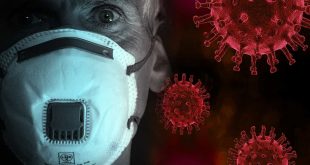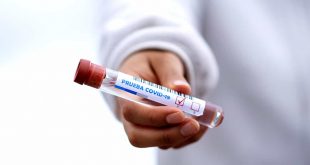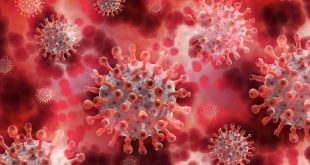A personal, handheld device emitting high-intensity ultraviolet light to disinfect areas by killing the novel coronavirus is now feasible, according to researchers at Penn State, the University of Minnesota and two Japanese universities.
Finding a new material with the right composition is key to advancing UV LED performance. The Penn State team, in collaboration with materials theorists from the University of Minnesota, recognized early on that the solution for the problem might be found in a recently discovered new class of transparent conductors. When theoretical predictions pointed to the material strontium niobate, the researchers reached out to their Japanese collaborators to obtain strontium niobate films and immediately tested their performance as UV transparent conductors. While these films held the promise of the theoretical predictions, the researchers needed a deposition method to integrate these films in a scalable way.
Nature – SrNbO3 as a transparent conductor in the visible and ultraviolet spectra
There are two commonly employed methods to sanitize and disinfect areas from bacteria and viruses — chemicals or ultraviolet radiation exposure. The UV radiation is in the 200 to 300 nanometer range and known to destroy the virus, making the virus incapable of reproducing and infecting. Widespread adoption of this efficient UV approach is much in demand during the current pandemic, but it requires UV radiation sources that emit sufficiently high doses of UV light. While devices with these high doses currently exist, the UV radiation source is typically an expensive mercury-containing gas discharge lamp, which requires high power, has a relatively short lifetime, and is bulky.
The solution is to develop high-performance, UV light emitting diodes, which would be far more portable, long-lasting, energy-efficient and environmentally benign. While these LEDs exist, applying a current to them for light emission is complicated by the fact that the electrode material also has to be transparent to UV light.
“You have to ensure a sufficient UV light dose to kill all the viruses,” said Roman Engel-Herbert, Penn State associate professor of materials science, physics and chemistry. “This means you need a high-performance UV LED emitting a high intensity of UV light, which is currently limited by the transparent electrode material being used.”
The rare combination of high transmission and high conductivity of SrNbO3 facilitates the improvement of existing UV LEDs suffering from poor EQEs, enabling energy efficient, long lasting, high performance, portable and environmentally benign solid state lighting solutions for UV sanitation, biomolecule sensing, UV phototherapy, UV curing, UV photolithography and high sensitivity solar blind detector technology.
Abstract
Few materials have been identified as high-performance transparent conductors in the visible
regime (400–700 nm). Even fewer conductors are known to be transparent in ultraviolet
(UV) spectrum, especially at wavelengths below 320 nm. Doped wide-bandgap semiconductors employed currently as UV transparent conductors have insufficient electrical
conductivities, posing a significant challenge for achieving low resistance electrodes. Here,
we propose SrNbO3 as an alternative transparent conductor material with excellent performance not only in the visible, but also in the UV spectrum. The high transparency to UV light
originates from energetic isolation of the conduction band, which shifts the absorption edge
into the UV regime. The standard figure of merit measured for SrNbO3 in the UV spectral
range of 260–320 nm is on par with indium tin oxide in the visible, making SrNbO3 an ideal
electrode material in high-performance UV light emitting diodes relevant in sanitation
application, food packaging, UV photochemotherapy, and biomolecule sensing.
SOURCES – Penn State, Nature Physics Communication
 The Argus Report Read about it!
The Argus Report Read about it!






